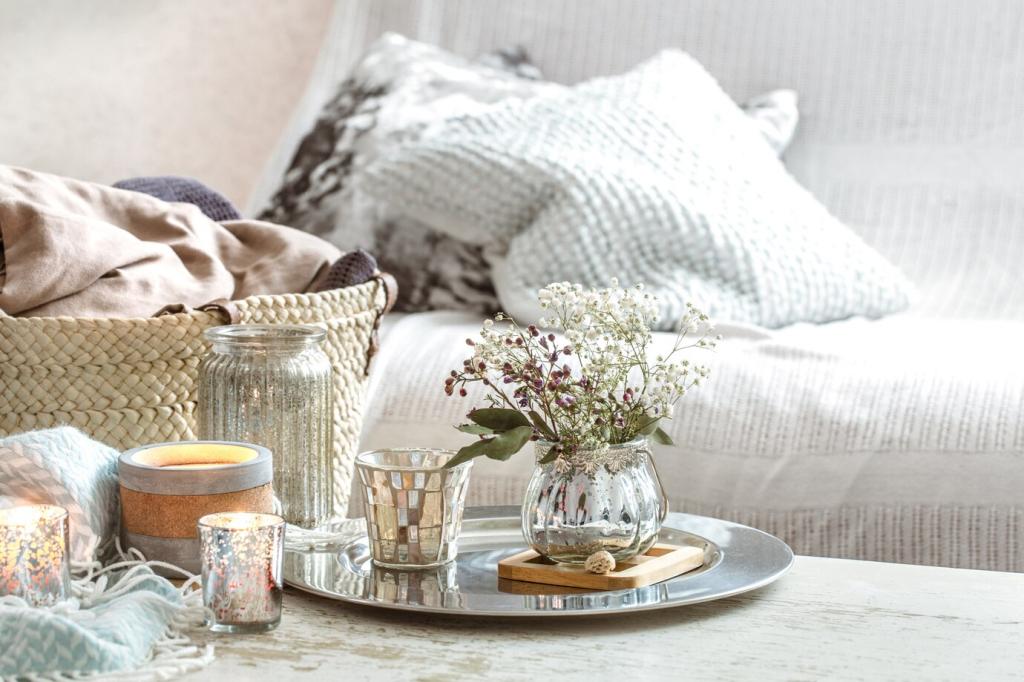Minimalist Interior Design Principles
Minimalist interior design is a philosophy that emphasizes simplicity, functionality, and harmony within a space. By removing unnecessary elements and focusing on the essentials, minimalist design creates environments that feel open, clean, and tranquil. The principles of minimalism extend beyond mere aesthetics—encouraging thoughtful decision-making, intentional use of materials, and a greater appreciation for the fundamentals of design. With growing interest in decluttered and purposeful living, understanding the foundational aspects of minimalist interiors empowers individuals to curate spaces that enhance calmness, clarity, and well-being.

The Essence of Minimalism
Simplicity as a Core Value
Simplicity lies at the heart of minimalist interior design. This principle advocates for straightforward forms, uncluttered spaces, and harmonized elements. By choosing simpler shapes, neutral colors, and restrained decor, every component has intentionality. Spaces designed with simplicity in mind foster a sense of ease and clarity, removing distractions and allowing inhabitants to focus on what truly matters. Simplicity also means streamlining furniture and accessories, embracing only what is functional and meaningful.
Embracing Open Space
Minimalist design thrives on the concept of “negative space,” which refers to the areas left empty between objects. These open expanses are as important as the items within the room, contributing to a sense of spaciousness and calm. By not filling every nook, minimalist interiors breathe, facilitating relaxation and movement. The thoughtful use of open space also emphasizes the beauty of each chosen piece, granting it visual importance and celebrating intentional selection.
Intentional Curation
Intentionality is pivotal in minimalist interiors. Every item within the space is carefully considered for its purpose, utility, and contribution to the overall atmosphere. Rather than filling a room for the sake of decoration, minimalism invites a slower, more deliberate process of curation. Objects that remain must serve a meaningful function—whether practical, emotional, or aesthetic—creating interiors that reflect the values and identities of their occupants.
Color Palettes and Material Choices
Minimalist interiors often begin with a foundation of neutral or muted shades—whites, grays, beiges, and soft earth tones. These colors evoke calmness and make spaces appear more expansive. The restrained palette serves as a tranquil backdrop that allows architecture and carefully selected decor to take center stage. Color may be introduced sparingly, often through textiles or art, to create understated focal points without disrupting the overall sense of harmony.
Functionality Above All
01
Multi-Purpose Furniture
In minimalist environments, furniture is often selected for its versatility. Multi-functional pieces, such as extendable tables, storage ottomans, or modular sofas, enable flexible use of space while reducing unnecessary clutter. These designs maximize every square meter, supporting a variety of activities without the need for excess furnishings. The focus on utility ensures the home remains tidy and accommodates changing routines gracefully.
02
Thoughtful Storage Solutions
Minimalist interiors rely on organized, concealed storage to maintain a clutter-free atmosphere. Built-in cabinetry, clever shelving, and integrated features provide homes for everyday items, keeping surfaces clear and visual chaos at bay. Storage is thoughtfully designed to suit specific organisational needs, thereby supporting a sustainable minimalist lifestyle where everything has a designated place. This careful planning turns even small spaces into highly functional and serene environments.
03
Ease of Maintenance
A minimalist approach simplifies maintenance by reducing the number of items and emphasizing easy-to-clean surfaces. Uncomplicated layouts and accessible materials allow for effortless upkeep, freeing up time and energy for more meaningful pursuits. With less to tidy, clean, and manage, minimalist spaces help mitigate stress and encourage a sense of balance in daily living.
Previous
Next
Mindful Decoration
Artwork in minimalist spaces tends to be selected for its clarity and resonance. Rather than crowding walls with numerous pieces, a single large artwork or a few well-placed objects are featured. This approach creates significance and encourages contemplation. The absence of visual noise allows the selected art to be fully appreciated as a focal point, contributing meaningfully to the emotional tone of the room.

Spatial Flow and Layout
Creating Cohesive Pathways
Minimalist design avoids cramped and awkward navigation by planning clear, logical pathways. Furniture is positioned to allow easy passage and to enhance the perception of space. The openness between living, dining, and other shared areas strengthens social interaction and comfort, allowing people to move fluidly and feel connected within the environment.
Zoning with Subtle Cues
Rather than relying on walls or heavy partitions, minimalist interiors often use subtle cues to define zones. Variations in rug texture, changes in floor level, or the strategic placement of furniture can signal transitions between different functions, such as from dining to relaxing. These strategies maintain an uninterrupted sense of openness while organizing activities, marrying utility with simplicity.
Flexibility in Use
Minimalist spaces are designed to adapt to evolving needs. Open plans and unobstructed layouts make reconfiguration simple—furniture can be rearranged for gatherings, quiet study, or relaxation with minimal effort. This flexibility extends the lifespan of the design and supports varied lifestyles, ensuring the interior remains timeless and accommodating as habits and preferences change.
Personal Expression without Excess
Showcasing Treasured Possessions
Unlike maximalist interiors that display numerous collections, minimalism celebrates select personal items. A cherished book, family heirloom, or travel memento gains prominence in an uncluttered setting, becoming a focal point and a touchstone for memory and identity. These conscious inclusions reflect personal history and values without disrupting visual serenity.
Customized Minimalism
Each minimalist interior is uniquely tailored, responding to the occupant’s lifestyle, needs, and inspirations. Whether through a preferred color accent, bespoke furniture, or a signature scent, these personalized touches ensure the space feels both distinct and authentic. The absence of excess allows customization to shine, crafting an environment that genuinely resonates with those who live in it.
Balancing Restraint and Warmth
A key challenge in minimalist design is avoiding coldness or impersonality. This is addressed by thoughtfully layering soft materials, integrating warm lighting, and artfully combining personal touches. The result is an interior that feels inviting as well as streamlined, proving that minimalism can embrace comfort and charm while maintaining discipline and order.
